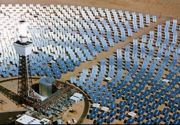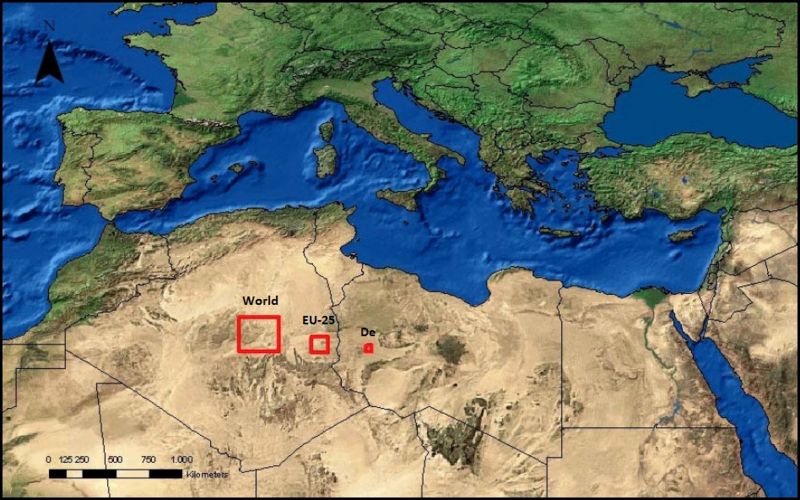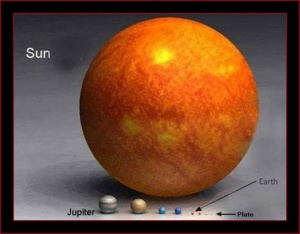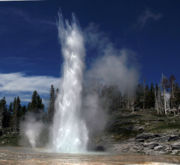Difference between revisions of "Energy"
(→Ubiquitous photovoltaics) |
|||
| (9 intermediate revisions by 2 users not shown) | |||
| Line 5: | Line 5: | ||
Steadily increasing {{wp|Energy_conservation|energy efficiency}} due to improved system design and increasing cultural awareness should become a significant factor in our energy usage. | Steadily increasing {{wp|Energy_conservation|energy efficiency}} due to improved system design and increasing cultural awareness should become a significant factor in our energy usage. | ||
| − | The issue currently is monetary economics. The bottom line is that with the current economic framework it is still 'cheaper' to pump oil out of the ground and burn it to produce power than use other more plentiful, renewable and environmentally benign sources. These alternative energy sources are sitting right in front of us waiting to be harnessed. It may be that [[Open collaborative design|open-source methods]] can bypass the incumbent economic system to enable plentiful, environmentally-friendly power. | + | The issue currently is monetary economics. The bottom line is that with the current economic framework it is still 'cheaper' to pump oil out of the ground and burn it to produce power than use other more plentiful, renewable and environmentally benign sources. These alternative energy sources are sitting right in front of us waiting to be harnessed. It may be that [[Open collaborative design|open-source methods]] can bypass the incumbent economic system to enable plentiful, environmentally-friendly power.<includeonly><br>{{more|Energy}}</includeonly><noinclude> |
| − | Much future energy generation is likely to become more [[decentralisation|decentralised]]. Many buildings, or group of buildings, will likely generate much of their own power on-site by incorporating solar panels into the roof, walls, pavements and even windows <sup>[http://www.renewablewire.com/solar-power/rainbow-solar-announces-photovoltaic-glass-windows.html]</sup>, as well as having other renewable energy generation devices such as wind turbines and geothermal systems. | + | Much future energy generation is likely to become more [[decentralisation|decentralised]]. Many [[Construction|buildings]], or group of buildings, will likely generate much of their own power on-site by incorporating solar panels into the roof, walls, pavements and even windows <sup>[http://www.renewablewire.com/solar-power/rainbow-solar-announces-photovoltaic-glass-windows.html]</sup>, as well as having other renewable energy generation devices such as wind turbines and geothermal systems. |
| − | Although for power requirements beyond that which can be captured locally for more energy intensive activities, there will be very large-scale renewable energy generation sites. For instance electricity to supply the entire United States or Europe could be met with photo-voltaic arrays measuring one hundred miles by one hundred miles [http://www1.eere.energy.gov/solar/myths.html] | + | Although for power requirements beyond that which can be captured locally for more energy intensive activities, there will be very large-scale renewable energy generation sites. For instance electricity to supply the entire United States or Europe could be met with photo-voltaic arrays measuring one hundred miles by one hundred miles [http://www1.eere.energy.gov/solar/myths.html]. |
We have these major sources of energy available to us, in no particular order and not including fossil fuels that we currently rely on for the majority of our energy today: | We have these major sources of energy available to us, in no particular order and not including fossil fuels that we currently rely on for the majority of our energy today: | ||
| − | |||
==Generating energy== | ==Generating energy== | ||
| Line 19: | Line 18: | ||
Unlike fossil fuel energy, solar technology is improving rapidly. As a result of improving technology and changing attitudes, world photovoltaic production is [http://re.jrc.ec.europa.eu/refsys/pdf/PV-Report2009.pdf growing exponentially]. And as production has been growing, price has been falling, with about a 20% decrease in price-per-watt for every doubling in production<sup>[http://www.youtube.com/watch?v=OsRiP07lRKA]</sup>. | Unlike fossil fuel energy, solar technology is improving rapidly. As a result of improving technology and changing attitudes, world photovoltaic production is [http://re.jrc.ec.europa.eu/refsys/pdf/PV-Report2009.pdf growing exponentially]. And as production has been growing, price has been falling, with about a 20% decrease in price-per-watt for every doubling in production<sup>[http://www.youtube.com/watch?v=OsRiP07lRKA]</sup>. | ||
| + | |||
| + | [[Image:Solar_panels_needed.jpg|center|800px|thumb|This map shows the area needed to meet the world's energy needs (square on left), the EU's (middle), and Germany's (right). It is less than a third of 1% of the Sahara Desert. [http://www.desertec.org/en/concept/ Desertec] is multi-national program looking to develop this kind of large-scale solar facility and infrastructure.]] | ||
Solar technologies can be divided into first, second and third generation. First generation solar cells use silicon wafers to convert about 12% of the light to electricity and work only in direct sunlight. As of 2008, 85% of solar panels sold were first generation<sup>[http://www.youtube.com/watch?v=OsRiP07lRKA][http://en.wikipedia.org/wiki/Solar_cell]</sup>. Second generation solar cells are similar, but the silicon wafers are much thinner, on the nanometer scale, which reduces material used, allowing lower production costs and higher manufacturing capacity. Using lenses and mirrors to concentrate the sun's light onto a smaller area, thus reducing the number of cells needed, is now commonplace. This method allows relatively expensive high-efficiency solar cells to be integrated into relatively cheap systems.<br> {{wp|Third_generation_photovoltaic_cell|The third generation of solar cells}} encompasses a range of technologies at various stages of development, including {{em}} | Solar technologies can be divided into first, second and third generation. First generation solar cells use silicon wafers to convert about 12% of the light to electricity and work only in direct sunlight. As of 2008, 85% of solar panels sold were first generation<sup>[http://www.youtube.com/watch?v=OsRiP07lRKA][http://en.wikipedia.org/wiki/Solar_cell]</sup>. Second generation solar cells are similar, but the silicon wafers are much thinner, on the nanometer scale, which reduces material used, allowing lower production costs and higher manufacturing capacity. Using lenses and mirrors to concentrate the sun's light onto a smaller area, thus reducing the number of cells needed, is now commonplace. This method allows relatively expensive high-efficiency solar cells to be integrated into relatively cheap systems.<br> {{wp|Third_generation_photovoltaic_cell|The third generation of solar cells}} encompasses a range of technologies at various stages of development, including {{em}} | ||
| Line 43: | Line 44: | ||
Conveniently, ubiquitous photovoltaics would mean that the greater the population concentration in an area, the greater the energy-generating surface would be. | Conveniently, ubiquitous photovoltaics would mean that the greater the population concentration in an area, the greater the energy-generating surface would be. | ||
| − | {{wp|Polymer_solar_cell|Polymer solar cells}}, {{wp|Nanocrystal_solar_cells|nanocrystals}}, or {{wp|Nantenna|nanoantennae}} are potential enabling technologies. | + | {{wp|Polymer_solar_cell|Polymer solar cells}}, {{wp|Nanocrystal_solar_cells|nanocrystals}}, or {{wp|Nantenna|nanoantennae}} are potential enabling technologies. |
| + | |||
| + | Another potential enabling path to ubiquitous photovoltaics is self-assembling biophotovoltaics. This approach could allow anyone to extract and stabilize proteins from any plant matter, for example lawn clippings or fallen leaves. Researchers at MIT have succeeded in not only generating solar energy by this method, but making the process easy enough that anyone could do it simply by adding a small bag of stabilizing chemicals to organic waste and soaking a piece of glass or metal in the resulting mixture. Because neither technical skills nor expensive raw materials are needed, this method could allow ubiquitous photovoltaics. The conversion efficiency of existing models is only 0.1%, but researchers are confident they can get it up to 1 or 2%, which would make it useful<sup>[http://www.kurzweilai.net/how-to-create-ultra-low-cost-solar-cells-from-agricultural-waste]</sup>. | ||
| + | |||
| + | ===Solar thermal=== | ||
| + | Solar thermal technology involves concentrating the Sun's light is converted to mechanical energy to drive a turbine. It may be concentrated to boil water to power a steam engine. | ||
| + | |||
| + | Solar thermal power systems have two key advantages: | ||
| + | *They create a lot of power. Where photovoltaic systems struggle to convert more than 15% of sunlight into electricity, solar thermal systems using steam engines can achieve solar-to-electric conversion efficiencies of over 40% | ||
| + | *They require no rare materials, such as gold or indium, which are needed for some photovoltaic chemistries. A system of mirrors, lenses and iron mechanical parts is potentially much cheaper and easier to build than photovoltaics. It is also possible to [[Virtual designs into physical objects|digitally manufacture]] many such parts. This technology could easily be open-sourced, and their are several groups such as [http://www.shpegs.org/ SHPEGS] and [http://www.solarfire.org/ SolarFire] working on this already. | ||
| + | |||
| + | Solar thermal systems may well prove preferable to photovoltaic in static, land-based generation. However, unlike photovoltaics, they require a 'footprint' of land and cannot be integrated into existing buildings, vehicles, roads etc. | ||
====Space-based solar==== | ====Space-based solar==== | ||
| Line 50: | Line 62: | ||
Solar satellites could easily meet all mankind's energy needs for the foreseeable future. While wind, ocean, bacterial and other means of generating clean energy can make a contribution, space-based solar power (along with ubiquitous photovoltaics and nuclear fusion) have the potential to provide nearly all of the 30 terawatts we will need in the future. A solar array in space measuring 15km by 15km and converting and transmitting power at just 10% efficiency would produce nearly 30TW. | Solar satellites could easily meet all mankind's energy needs for the foreseeable future. While wind, ocean, bacterial and other means of generating clean energy can make a contribution, space-based solar power (along with ubiquitous photovoltaics and nuclear fusion) have the potential to provide nearly all of the 30 terawatts we will need in the future. A solar array in space measuring 15km by 15km and converting and transmitting power at just 10% efficiency would produce nearly 30TW. | ||
| − | + | There are two obstacles that have held back space-based solar power so far. First, we would need to develop a more efficient means of [[Colonising Space/Access to space|access to space]]. It is too expensive to launch something as large as a solar satellite into space using modern rocket technology. Automated material processing and construction in lunar orbit would allow construction at the required scale. Second is the issue of transmitting energy wirelessly back to Earth. This can in theory be done with microwave beams directed at a receiver on Earth, but the technology is still in the prototype phase, see {{wp|Microwave_transmission|Microwave transmission}} | |
===<!--[[Wind power|Wind]]--> Wind=== | ===<!--[[Wind power|Wind]]--> Wind=== | ||
| Line 125: | Line 137: | ||
==Storing energy== | ==Storing energy== | ||
| + | ===Compressed air=== | ||
| + | For solving the intermittency problem with wind and solar, compressed air has several advantages over batteries or other technologies: | ||
| + | *It is about 50% cheaper than batteries | ||
| + | *Unlike batteries, it requires no rare elements and no chemicals that could leach out into the soil. | ||
| + | *Unlike batteries, it does not run down over time. Air compressors have few or no moving parts, so they can run for ages. | ||
| + | |||
| + | Mechanical energy from wind turbines or concentrating solar powered steam engines could be used directly to compress air, without generating electricity. This air is later used to spin a turbine to generate electricity on demand. This increases efficiency, as the energy is only converted once. | ||
| + | |||
| + | *See [http://solar.gwu.edu/index_files/Resources_files/Solar%20Plan.pdf this report] on a renewable energy grid for the US using compressed air. | ||
| + | *http://www.u.arizona.edu/~sreynold/caes.pdf | ||
| + | |||
===Batteries=== | ===Batteries=== | ||
| Line 134: | Line 157: | ||
==Using energy== | ==Using energy== | ||
| − | |||
| − | |||
As our technology advances, it is becoming more and more energy-efficient. According to Wikipedia's article on {{wp|Efficient_energy_use|efficient energy use}}, "up to 75% of the electricity used in the U.S. today could be saved with efficiency measures that cost less than the electricity itself". When considering the energy needs of a [[post-scarcity]] world, it is important to recognize that most of the things people want to do - heat a building, wash clothes, light their homes - can be achieved with a fraction of the energy we currently use. | As our technology advances, it is becoming more and more energy-efficient. According to Wikipedia's article on {{wp|Efficient_energy_use|efficient energy use}}, "up to 75% of the electricity used in the U.S. today could be saved with efficiency measures that cost less than the electricity itself". When considering the energy needs of a [[post-scarcity]] world, it is important to recognize that most of the things people want to do - heat a building, wash clothes, light their homes - can be achieved with a fraction of the energy we currently use. | ||
| − | [[Transport]] is currently one of the biggest demands on energy supply, taking up 27.8% of all the energy we use<sup>[http://en.wikipedia.org/wiki/World_energy_consumption#By_sector]</sup>. The [[Transport|transport article]] looks at how we can transport people and goods using almost no energy. | + | *[[Transport]] is currently one of the biggest demands on energy supply, taking up 27.8% of all the energy we use<sup>[http://en.wikipedia.org/wiki/World_energy_consumption#By_sector]</sup>. The [[Transport|transport article]] looks at how we can transport people and goods using almost no energy. |
| − | + | *Good architecture and insulation can reduce energy needed to heat and cool buildings to zero in nearly all climates. This is discussed [[Construction|here]]. | |
| − | + | ||
Post-scarcity of energy will arise when we have both halves of the equation: abundant production of energy, and non-wasteful use of it. | Post-scarcity of energy will arise when we have both halves of the equation: abundant production of energy, and non-wasteful use of it. | ||
{{pagebgend}}</noinclude> <!-- THIS LINE MUST BE KEPT AT FAR BOTTOM --> | {{pagebgend}}</noinclude> <!-- THIS LINE MUST BE KEPT AT FAR BOTTOM --> | ||
Latest revision as of 12:32, 17 June 2014
|







